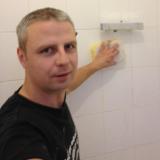
Rafal Kaczynski
Hi Peter In recent years, the airtightness of buildings has become an issue, as part of a drive to provide thermal comfort and reduce energy consumption. However, as dwellings are made more airtight, internal pollutant sources can have greater impact on indoor air quality Occupants may experience adverse health effects unless ventilation is effective. Ventilation is necessary to provide a healthy and comfortable internal environment for the building occupants.The main purpose of ventilation is to remove polluted indoor air from a building and replace it with ’Fresh’ outside air. There are three main types of ventilation; ‘Purge’ Sometimes referred to as rapid ventilation, assists with the removal of occasional pollutants such as smoke and smells from cooking or fumes from painting and decorating. Purge ventilation can also assist in reducing the overheating of a building during warm summer periods. An openable window can provide purge ventilation. ‘Extraction’ Ventilation within rooms which are regularly exposed to pollutants or excess water vapour i.e. Kitchens or Bathrooms can be assisted by the use of permanent or intermittent extraction. Extraction limits the spread of fumes and pollutants throughout the building. ‘Background’ Described as ‘a small ventilation opening designed to provide controllable whole building ventilation. Background ventilation via trickle ventilators provides the building with the facility for secure, draught free ventilation. Background ventilation should ideally be positioned 1.7m above floor level, to avoid noticeable draughts, trickle vents are ideal for meeting this requirement. Various devices can be used to open and close vents to suit the activities of the inhabitants of the room/building. I hope this can help with your problem Best regards Rafal
